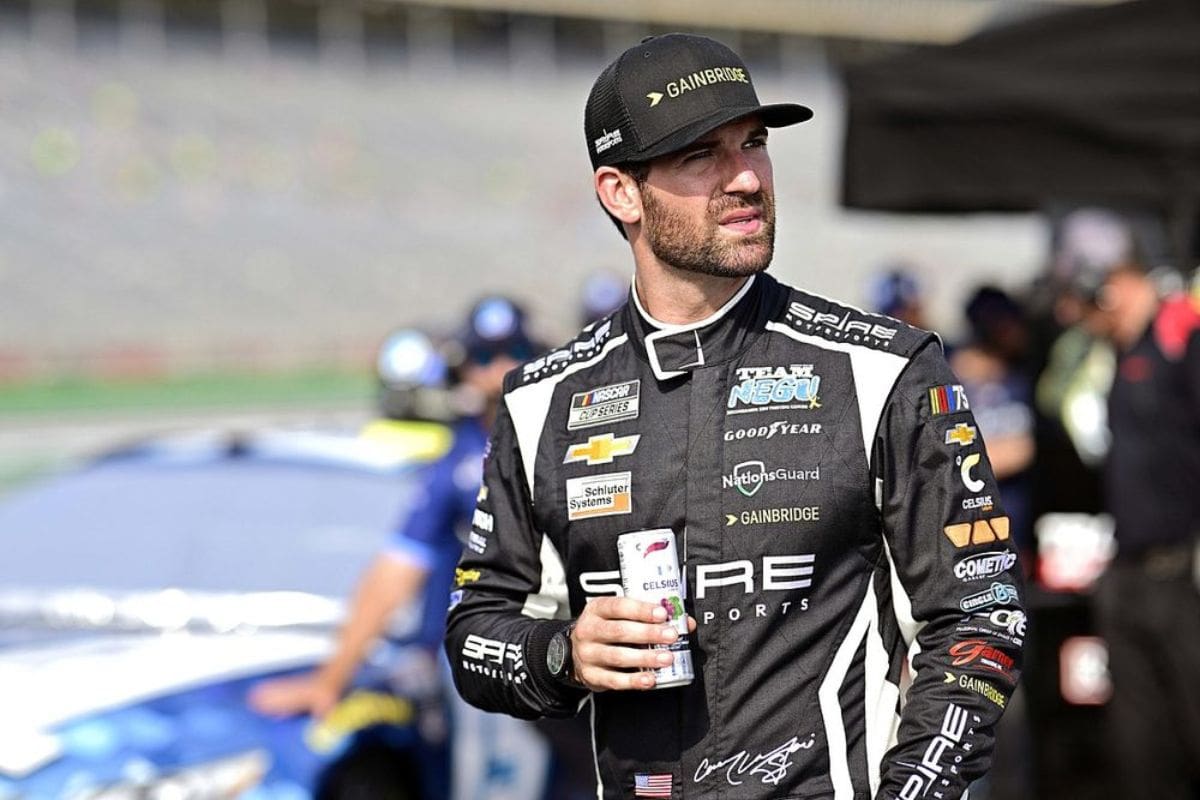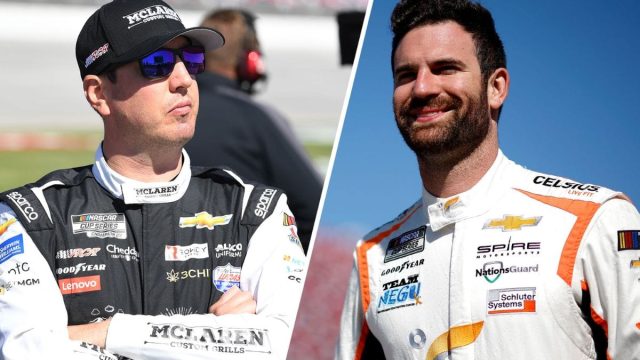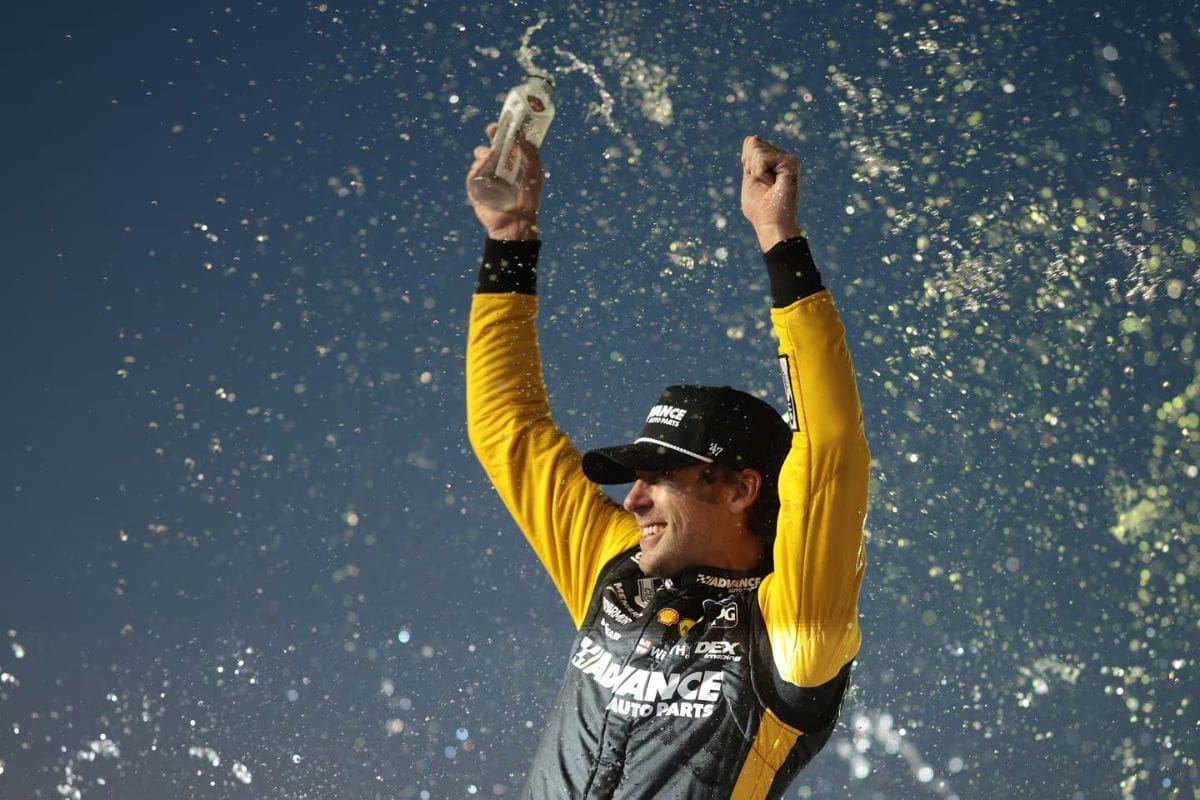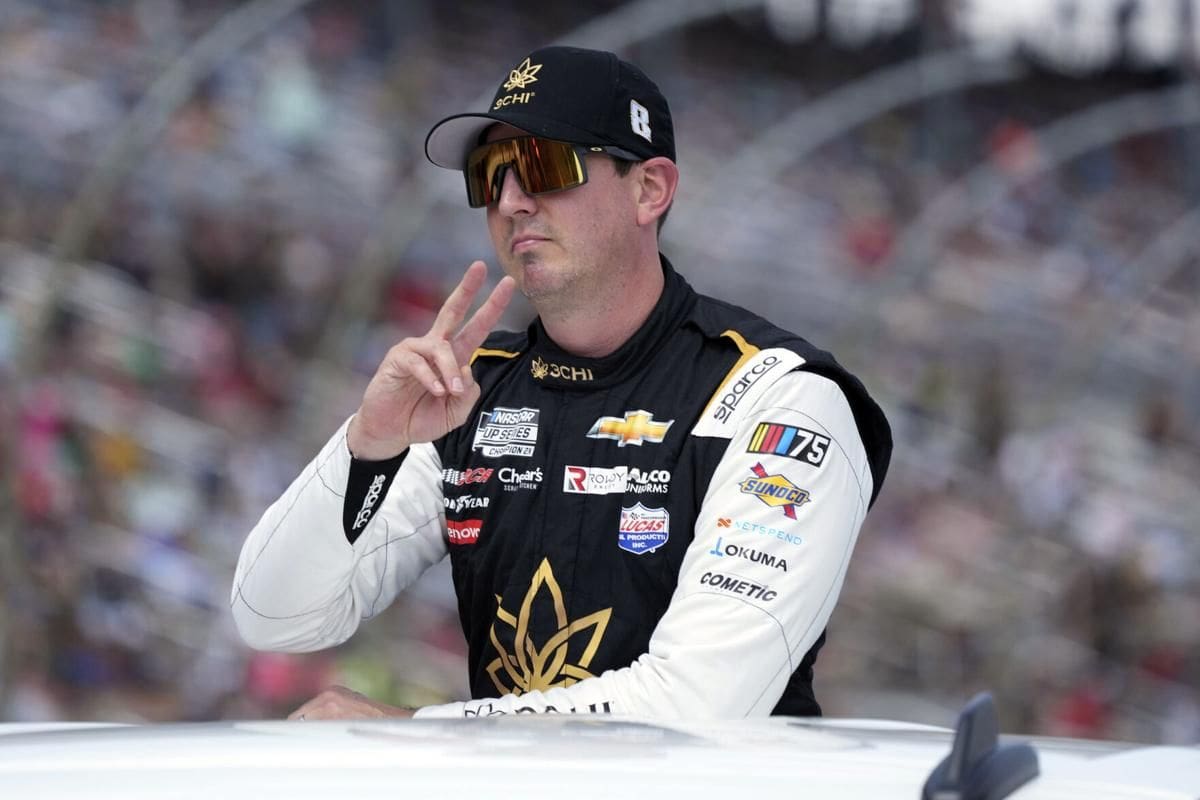Reason for Corey LaJoie and Kyle Busch Crash: The recent admission by Corey LaJoie that his team encouraged self-centered behavior, culminating in the wipeout of Kyle Busch, casts a spotlight on the underlying pressures within NASCAR to embrace aggressive driving tactics. This incident not only highlights the evolving strategies influenced by the introduction of the Next Gen car but also prompts a deeper examination of how team directives shape driver actions on the track. As the NASCAR community and key figures like Kyle Busch react, it becomes important to scrutinize the broader implications of such team dynamics on the sport’s competitive integrity and safety standards.
Key Highlights
- Corey LaJoie admitted his team encouraged him to adopt a more aggressive driving style.
- The aggressive tactics led to the late-race incident with Kyle Busch at Pocono Raceway.
- LaJoie’s departure from his usual restraint was influenced by team strategy for better results.
- LaJoie’s actions were a direct response to the competitive pressures of the Next Gen car environment.
- The incident sparked fan outrage and criticism, highlighting a failure in sportsmanship.
Ryan Blaney’s Victory and Corey LaJoie’s Late-Race Incident
Ryan Blaney’s victory at Pocono Raceway marked his subsequent victory this season, but the race’s storyline was dominated by the late-race incident involving Corey LaJoie and Kyle Busch. As Blaney celebrated becoming the fifth driver to secure multiple Cup wins this season, the attention of many turned to the chaotic events that transpired during the final laps.
During a pivotal late-race restart, tensions flared between LaJoie and Busch, also known as Rowdy. The intensity of their confrontation was noticeable, fueled by aggressive driving and defensive blocks. LaJoie, evidently frustrated by Busch’s tactics, made a decisive and controversial move by clipping the bumper of Busch’s No. 8 car. This action triggered a noteworthy multi-car wreck, resulting in Busch’s premature exit from the race with a ‘Did Not Finish’ (DNF) status.
The aftermath of this incident was immediate and noteworthy. LaJoie’s choice to initiate contact with Busch not only altered the dynamics of the race but also sparked a broader conversation about racing conduct and strategy. From an analytical perspective, this incident highlights the high-stakes sport of NASCAR, where split-second decisions can significantly impact the outcomes for multiple drivers.
Blaney’s skill in driving through the chaos and securing a win reflects his adeptness and skills under pressure. However, the incident between LaJoie and Busch overshadowed this accomplishment, emphasizing the unpredictable nature of motorsports competition.
Spire Motorsports’ Strategy at Pocono
Corey LaJoie openly shared that his Spire Motorsports’ directive to embrace a more assertive driving style was a significant factor in the controversial move he executed during the final laps at Pocono Raceway. LaJoie, who has historically maintained a reputation for avoiding unnecessary conflicts, found himself in a situation where team strategy required a departure from his usual restraint. This calculated change, according to LaJoie, reflects a broader pattern within the Cup Series, where aggressive tactics are increasingly becoming the standard.
LaJoie explained that his team’s insistence on a bold approach was motivated by the necessity for improved finishes and points accumulation, which are essential in Cup Series. The directive was clear: to optimize every opportunity, even if it meant taking risks that could lead to controversial on-track incidents. This approach, while potentially beneficial in terms of race outcomes, carries inherent risks that can result in unintended consequences, as shown in the wipeout involving Kyle Busch.
“I’ve been getting poked and prodded by team that I be more aggressive on restarts, putting guys in the worst spots and putting myself in a leveraged position. So I just made a commitment; just take the run this several weeks and go and force the issue like a lot of the other guys are doing.” – (Lajoie)
The Impact of Next Gen Car and Racing Dynamics
The shift toward a more aggressive driving strategy is further compounded by the unique characteristics and challenges introduced by the Next Gen car, fundamentally altering the dynamics of racing within the Cup Series. Corey LaJoie’s recent move against Kyle Busch at Pocono highlights how the new vehicle design and its performance parameters are reshaping driver behavior and race outcomes.
“The Cup Series is you take all the time; no matter what, no matter first lap, last lap, or any lap in between for first or for dirty first, you’re racing your a** off. So it’s been a little bit of an adjustment for me to just turn up the selfishness meter or the give-and-take model, where you had a little bit of give-and-take with the old car. This car there’s all take.” – (Lajoie)
The Next Gen car’s design highlights parity, making every position fiercely contested. The car’s aerodynamic properties and handling capabilities have reduced the margin for error, necessitating a more aggressive approach to maintain a competitive advantage.
The Next Gen car features a refined aerodynamic package that increases downforce, making cars more stable at high speeds but also more sensitive to changes in airflow caused by close racing. Independent Rear Suspension improves handling through corners but requires drivers to adapt their braking and acceleration strategies, often leading to more forceful driving to exploit these advantages.
Single Lug Nut Wheels offer faster pit stops, reducing pit road time and increasing on-track aggression as drivers capitalize on every gained moment. With many components now standardized, team ingenuity is limited, thus pushing drivers to adopt more assertive strategies to differentiate themselves on the track. The new car’s design places different stress on tires, demanding that drivers balance aggression with tire conservation more carefully.
View this post on Instagram
LaJoie’s Perspective on Pocono Crash
From LaJoie’s analytical viewpoint, the incident at Pocono was a consequence of the heightened competitive pressures and tactical demands imposed by the Next Gen car’s design. LaJoie articulated that the aerodynamics and handling characteristics of the Next Gen car necessitate aggressive driving, particularly in tightly contested restarts. In this scenario, LaJoie found himself involved in a battle for track position, leading to the now-infamous collision with Kyle Busch.
Reviewing the replay, it’s evident that LaJoie’s No. 7 car made contact with Busch’s No. 8 vehicle, propelling it off the track and into the grass before it ultimately crashed into the safer barriers. This sequence of events raised questions about LaJoie’s judgment and driving tactics. However, LaJoie offered a broader perspective, suggesting that his actions were not merely a lapse in judgment but a reflection of the competitive ethos encouraged by his team.

LaJoie contended that his team had fostered a culture that prioritized aggressive, sometimes selfish, driving strategies to secure advantageous track positions. This guidance, combined with the intricate dynamics of the Next Gen car, created a scenario where slight miscalculations could have momentous repercussions.
“His car stopped having forward progress at the same time I was going to merge in behind him and essentially hooked him, wiped out a bunch of cars in the process. It’s not the outcome that I wanted … I think it’s easy for the people on Reddit and people watching the broadcast to just assume that whatever that was malicious, whether it was intentional or not. But I’ve come to learn that none of those opinions matter, to be honest with you.” – (Lajoie)
NASCAR Community Reaction and Kyle Busch’s Response
Amid widespread backlash from the NASCAR community, LaJoie faced a torrent of criticism while Kyle Busch chose to remain silent, fueling speculation about his struggles during what is possibly his most challenging season. Despite the storm of negative feedback directed at him, LaJoie seems resolute, acknowledging that while his aggressive racing tactics might have crossed a line, they were ultimately driven by the competitive nature of the sport and encouragement from his team.
The NASCAR community’s reaction has been largely critical, with many fans and analysts condemning LaJoie’s actions as reckless and unsportsmanlike. This incident has not only overshadowed LaJoie’s individual performance but has also raised questions about the broader ethical standards and tactical approaches within racing teams.
This incident is seen as a notable blemish on what has been a challenging season for Busch, potentially affecting his morale and future performance.
News in Brief: Reason for Corey LaJoie and Kyle Busch Crash
The acknowledgment by Corey LaJoie regarding his team’s encouragement of selfish behavior, which contributed to the incident involving Kyle Busch, highlights the growing emphasis on aggressive tactics in NASCAR. This shift is reflective of the changing competitive landscape influenced by the Next Gen car and altered racing dynamics.
The broader NASCAR community’s reaction and Kyle Busch’s response emphasize the ongoing debate over the balance between assertiveness and sportsmanship in the sport.
ALSO READ: Corey LaJoie’s Struggles Could Tarnish Rodney Childers’ Reputation, Brett Griffin Warns


